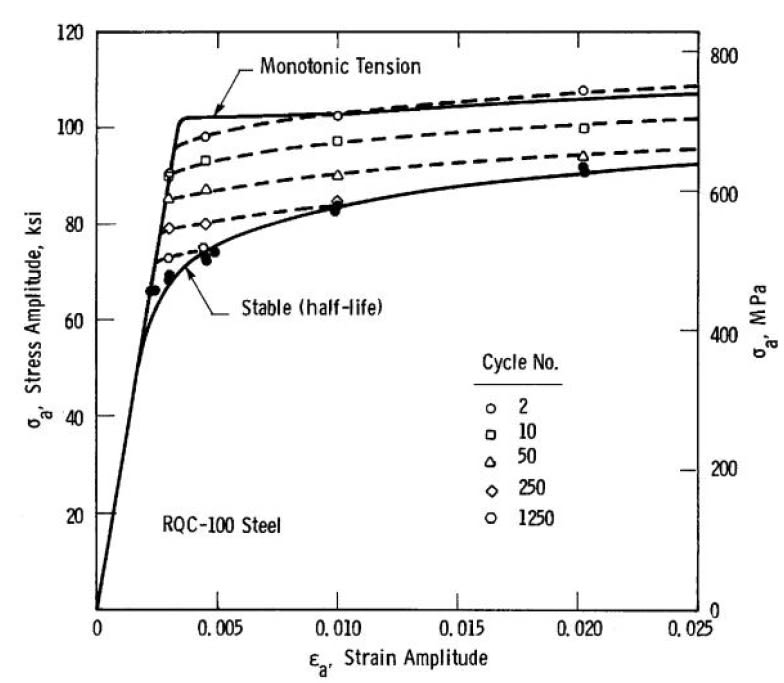Henry0726
Structural
- Apr 18, 2024
- 1
Hello, all!
I was looking at an article and I found these results:

These are the results for some samples with the same material and all under total reverse cycle load.
I don't understand the reason of Yield stress reduce after receive some cycles. I had in mind that there is a hardening behavior in the grains, which increases the strength of material. The same that happen when apply shot peening, for example, which material receive a residual stress with hardening surface.
Could, please, somebody explain me better the reason of the yield stress reduce after some cycles in this case?
Thank you.
I was looking at an article and I found these results:

These are the results for some samples with the same material and all under total reverse cycle load.
I don't understand the reason of Yield stress reduce after receive some cycles. I had in mind that there is a hardening behavior in the grains, which increases the strength of material. The same that happen when apply shot peening, for example, which material receive a residual stress with hardening surface.
Could, please, somebody explain me better the reason of the yield stress reduce after some cycles in this case?
Thank you.
